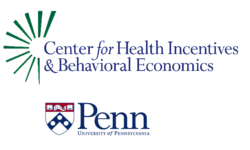
Choice Required: Auto-Refill Prescriptions
Organization : Center for Health Incentives and Behavioral Economics
Project Overview
Project Summary
CVS/Caremark members received phone recordings and online messages requiring them to choose between the desirable option of enrolling in an automatic refill prescription program, and the undesirable option of completing refills manually.
Impact
The intervention increased member enrollment in the automatic prescription refill program from 15.7% to 32% in telephone interactions and from 12.3% to 21.9% in website interactions.
Challenge
Not adhering to medication regimens has individual, public health, and economic consequences. While helpful automatic prescription refill programs are widely available, few individuals enroll.
Design
CVS/Caremark members received one of two recorded phone messages. One message asked them to opt-in to an automatic prescription refill program. The other message used enhanced active choice, requiring members to choose between refilling prescriptions on their own or having the pharmacy refill them automatically. Enhanced active choice requires individuals to choose between options that highlight the costs of the less-desirable alternative.
Enhanced active choice was also used on a prescription ordering website. Upon logging in, CVS/Caremark members saw a list of medications that were eligible for automatic refills. Some members then saw a message asking them to opt-in to the automatic refill program by checking a box, whereas others were required to actively choose between ordering their own prescriptions and enrolling in the program.

Examples of opt-in versus enhanced active choice phone and website messaging
Impact
A randomized evaluation found that requiring members to choose between the desirable and undesirable options significantly improved enrollment in the automatic refill program. CVS/Caremark members who received the enhanced active choice recorded phone message were 16.3 percentage points more likely to enroll in the refill program, relative to those who were prompted to opt-in (32% versus 15.7%). For the website, members who saw the enhanced active choice were 9.6 percentage points more likely to enroll in the program, as compared to those who were asked to opt-in (21.9% versus 12.3%).
Implementation Guidelines
Inspired to implement this design in your own work? Here are some things to think about before you get started:
- Are the behavioral drivers to the problem you are trying to solve similar to the ones described in the challenge section of this project?
- Is it feasible to adapt the design to address your problem?
- Could there be structural barriers at play that might keep the design from having the desired effect?
- Finally, we encourage you to make sure you monitor, test and take steps to iterate on designs often when either adapting them to a new context or scaling up to make sure they’re effective.
Additionally, consider the following insights from the design’s researcher:
- The design should require individuals to make a choice between a given set of options.
- Both the desirable and undesirable options should be presented before the individual is asked to make a choice.
For more guidance on implementing this design, select “I want to try this” from the left drop-down menu.
Project Credits
Researchers:
Punam Anand Keller Tuck School of Business, Dartmouth College
Bari Harlam CVS/Caremark
George Loewenstein Carnegie Mellon University
Kevin G. Volpp University of Pennsylvania School of Medicine and the Wharton School; Philadelphia VA Medical Center


